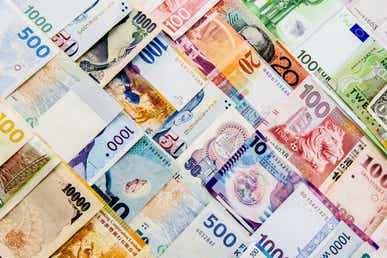Learn How to Understand Currency Futures Pricing

Learn How to Understand Currency Futures Pricing
Despite being born in England and living in Chicago all of my adult life (the past 8 years), I moved around a lot when I was younger, and traveled even more than that.
I have been fortunate enough to live in 4 different countries (England, Japan, the Netherlands and the U.S.) and have visited over 20 countries.
Now, before you close this blog post because you're thinking, “Great, I get to read about this jerk who wants to tell me about his field trips to Venice”, I promise there is a connection to trading futures!
So what’s the connection? Foreign currencies!
Traveling around Europe was made infinitely easier with the introduction of the euro, but the rest of the world still has to deal with currency exchange when traveling to other countries.
Converting Currency
I quickly became a master at Googling 'currency exchange rates' and figuring out how much money I should be receiving for the currency I was exchanging (which sadly was always less than my calculations after fees).
Currency exchange requires fairly basic math. For example if I was living in Europe and the $/€ exchange rate was 1.34 (meaning that €1 buys $1.34), I would know that my €100 would translate to $134.
Likewise I knew if the $/€ exchange rate was $1.34 I could just divide 1 by 1.34, to get 0.74, meaning $1 = €0.74
What Does Currency Exchange Have To Do With Trading?
Still wondering how currency exchange rates ties into trading?
Well when I first started looking at the markets and derivative products, I was baffled by /6J (the Yen futures).
I pulled /6J up on my trading platform and saw the way it was quoted...$0.008402.
When I saw this number, it completely threw me for a loop. Whenever I thought about the Yen, I always thought of it as Yen per dollar (which is currently 119).
Because /6J seems like it has such a small per contract cost, it is easy for unknowing investors to make the mistake of assuming that it is a small product - which it is not!
In this post, I will show you how the futures price actually translates to notional value after taking into account currency exchange.
/6J Yen Futures Contract Conversion
The current price of Yen Futures is*: 0.008392.
This means that 1 Yen = $0.008392.
So 100 Yen currently equals $0.8392.
So, $1 = 1/0.008392 = 119 Yen.
So that’s all good and pretty easy to follow, right?
Now that we've done the currency conversion, we have to do the math for the futures conversion.
Here are the futures contract specifications for /6J...
1 /6J contract represents 12,500,000 Yen (much like one /GC represents 100oz of Gold).
The notional value of /6J contracts is always 12,500,000 Yen - the notional value in U.S. Dollars is what fluctuates. So...
0.008392 x 12,500,000 = $104,900
That’s a big futures contract!
And that was a point I really wanted to make. When you first see the price of /6J on a screen it looks like a little guy, but it really isn’t!
Lets consider a recent move in /6J to show how the contract moves...
On 2-11-2015, /6J hit a low of 0.008302 and then hit a high of 0.008469, 5 days later.
/6J trades in increments of 0.000001 (for $12.50 a tick), so how much did the value of the contract change in just five days?
Let's do the math...
The future move from: 0.008469 – 0.008302 = 0.000167 or 167 ticks!
Therefore, the contract value changed 167 x $12.50 = $2,087.50!
That’s the change on one contract over 4 trading days (when /6J really wasn’t moving much)!
Knowing this gives us another shorthand formula to get the notional value.
If we know the current price is 0.008392, then we know that is equivalent to 8392 ticks.
8392 x $12.50 = $104,900…the same number we calculated earlier!
/6E Euro Futures Contract Conversion
Okay, so I gave you the much harder example first. The Euro futures (/6E) are much easier to wrap our heads around.
The Euro futures are currently trading for 1.1358* which means $1.1358 = €1. Just like the Yen, the Euro futures represent a fixed number of euros - €125,000.
So the U.S. notional value of a contract would be $1.1358 x €125,000 = $141,975.
/6E trades in increments of 0.0001, with each tick again representing $12.50.
So if we think of the current price of $1.1358 as 11,358 ticks, and then multiply that by $12.50, we again get $141,975.
Conclusion
Long story short, foreign currencies can be large, confusing contracts if you are not used to investing in these products.
As always with futures, it is best to make sure you have a complete understanding of the notional value of a futures contract if you plan to trade it, and currencies are no exception to that rule.
*Note: all currency exchange rates and pricing information is not current
Still have questions about currency conversion as it relates to futures contracts? Tweet to us @tastylive or send the research team a note at research@tastylive.com
Options involve risk and are not suitable for all investors. Please read Characteristics and Risks of Standardized Options before deciding to invest in options.